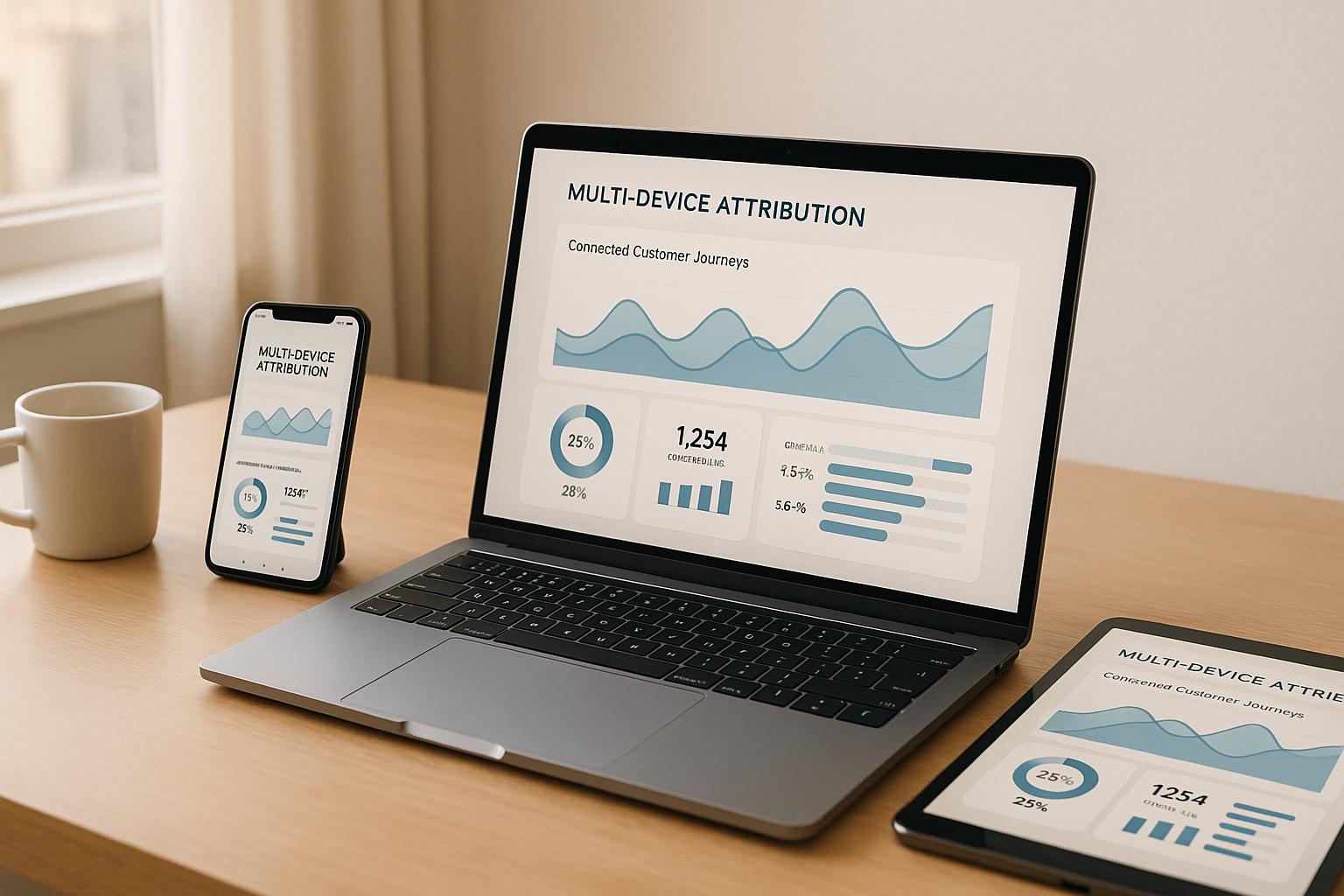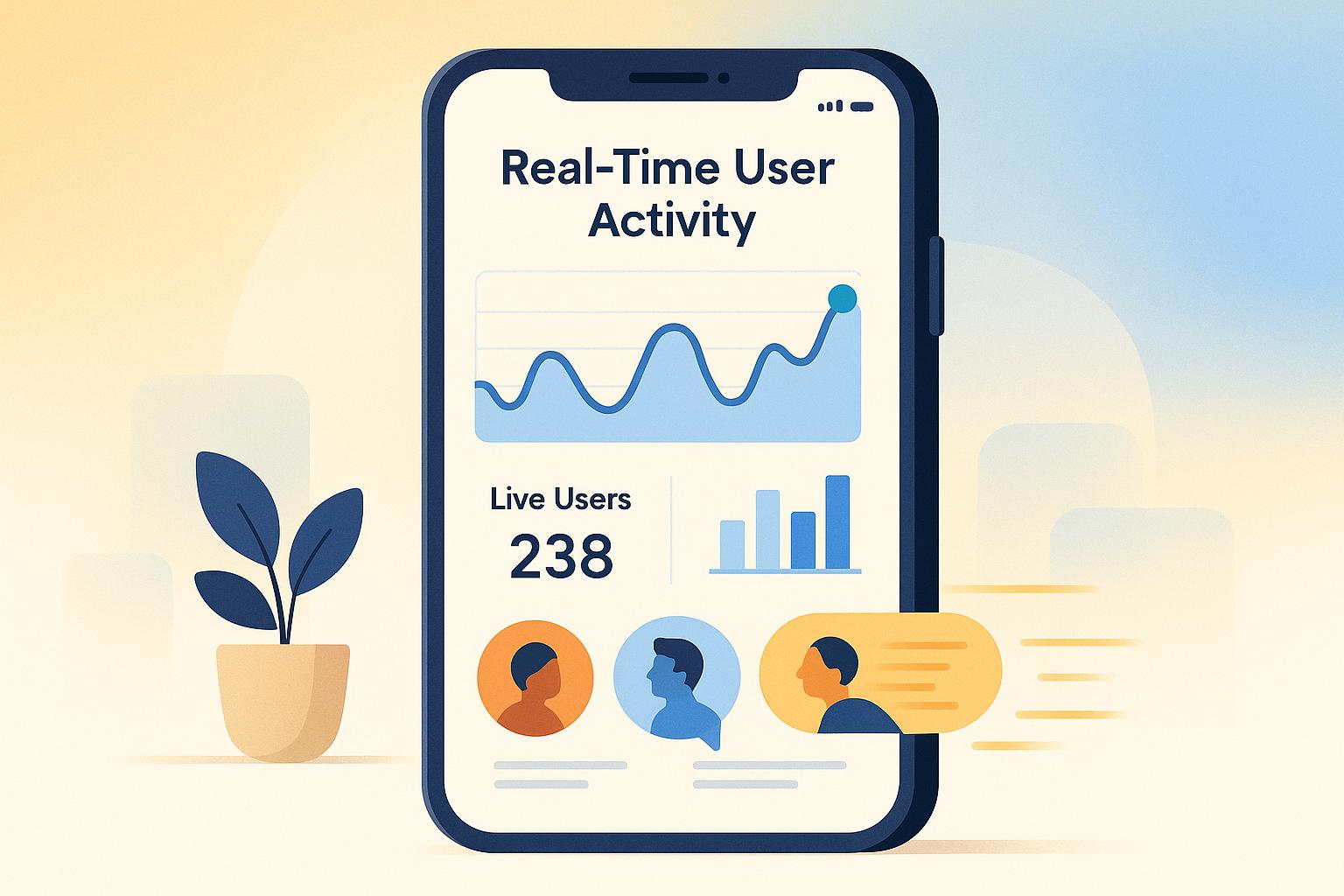Real-time data is transforming marketing by enabling faster decisions, personalized customer engagement, and better campaign results. Yet, only 7% of marketers use live data to execute strategies, leaving a massive opportunity for others to gain a competitive edge.
Key Benefits of Real-Time Data:
- Better Customer Engagement: Deliver personalized offers based on live customer behavior.
- Faster Decision-Making: Analyze and act on data instantly without manual delays.
- Improved Campaign Results: Adjust messaging, budgets, and timing on the go.
How to Get Started:
- Use tools like Customer Data Platforms (CDPs) to centralize and analyze real-time data.
- Focus on first-party data for accuracy.
- Start small with a few key metrics and scale gradually.
Real-time data isn't just a trend - it's essential for staying agile in today’s fast-moving marketing world.
Data-Driven Marketing Analytics: Transform Campaigns with Real-Time Insights
Benefits of Using Real-Time Data in Marketing
Real-time data changes the way businesses connect with customers and fine-tune their marketing strategies. By using live insights, companies can boost their marketing efforts in several key areas.
Better Customer Engagement
With real-time data, marketers can engage with customers at the perfect moment. For instance, when a customer browses a product, real-time analytics can suggest personalized recommendations or relevant offers based on their current interests.
Faster Decision-Making
Accessing and analyzing data instantly has completely changed how marketing decisions are made. Real-time analytics tools provide immediate insights, cutting out the need for time-consuming manual reporting.
"Real-time data management programs provide insights that are condensed and ready to analyze, reducing the need for manual data reporting and enabling quicker decision-making. This allows marketers to focus on strategic initiatives rather than tedious data analysis."
For example, Uber used real-time analytics to reduce wait times by 25% and increase driver earnings by 10%.
Improved Campaign Results
Real-time data helps marketers fine-tune campaigns as they run, leading to better performance.
Some ways real-time data improves campaigns include:
- Tracking audience reactions live and adjusting content as needed
- Tweaking budgets in response to performance data
Despite its benefits, only 7% of marketers currently use live data for real-time marketing. This leaves a huge opportunity for businesses to stand out by making better use of their data.
Using tools from resources like the Marketing Analytics Tools Directory can help businesses choose the right platforms for real-time analytics. With these tools, companies can make smarter, faster decisions, keeping their marketing strategies agile and impactful.
These advantages illustrate the power of real-time data, but the next step is figuring out how marketers can turn these insights into action.
sbb-itb-5174ba0
Ways to Use Real-Time Data in Marketing
Real-time data gives marketers the ability to make quick, informed decisions. Here's how it can be applied effectively across various marketing strategies.
Using Real-Time Data for Customer Segmentation
With real-time data, customer segmentation becomes more dynamic. Instead of relying solely on static profiles, marketers can group customers based on their current actions, like browsing habits or recent purchases. Modern tools allow profiles to update automatically, reflecting these behaviors in real time.
For example, an e-commerce site might identify users as "price-sensitive" or "premium buyers" based on their browsing patterns. This lets marketers send tailored messages that resonate immediately, improving both engagement and campaign results.
Creating Personalized Offers
Real-time data takes personalization to the next level by aligning offers with customers' immediate behaviors. By analyzing live data, marketers can craft experiences that feel directly relevant.
Here are some ways real-time data enhances personalization:
| Data Type | Application | Benefit |
|---|---|---|
| Customer Activity | Product suggestions, reminders | Encourages repeat sales |
| Location Data | Nearby store promotions | Increases store visits |
| Cart Activity | Abandoned cart follow-ups | Recovers lost purchases |
Tracking and Adjusting Campaigns
Real-time tracking allows marketers to tweak campaigns as they run, rather than waiting for post-campaign reviews. Tools like dashboards and heatmaps make it easy to see what’s working and what’s not.
Key areas to monitor and adjust:
- Budget Allocation: Redirect funds to the most effective channels immediately.
- Content Optimization: Refine messaging based on live audience feedback.
- Timing Adjustments: Shift schedules to match peak engagement times.
To make the most of these strategies, choosing the right tools and having a clear plan for implementation is essential.
How to Start Using Real-Time Data Tools
Setting up real-time data tools requires thoughtful planning and choosing platforms that align with your marketing goals.
Connecting Real-Time Data Platforms
Customer Data Platforms (CDPs) bring together customer data from various sources, allowing for real-time analysis and a complete view of your audience. Here’s how to build an effective real-time data system:
| Step | Purpose | Key Tip |
|---|---|---|
| Data Source Integration | Combine data from websites, social media, and email analytics | Maintain data consistency across sources |
| Data Validation | Ensure incoming data is accurate | Conduct regular quality checks |
| Real-time Processing | Analyze data instantly | Monitor system performance to avoid delays |
For example, Segment CDP helps businesses unify and analyze customer data in real time, boosting customer-focused decisions by as much as 70%.
Once your data is centralized and validated, the next step is choosing tools that turn insights into actionable strategies.
Choosing the Right Analytics Tools
Picking the right analytics tools is key to making the most of real-time data. Resources like the Marketing Analytics Tools Directory can guide businesses in finding the best match for their needs.
Key considerations:
- Speed and Compatibility: Tools should process data quickly and integrate smoothly with your existing systems.
- Scalability: Ensure the platform can handle increasing data volumes without losing efficiency.
- User Experience: A simple, intuitive interface allows for quicker access to insights and easier implementation.
After selecting your tools, the focus shifts to strategies that help you get the most out of them.
Tips for Using Real-Time Data Effectively
To make the most of your real-time data:
- Prioritize your own customer data for better insights.
- Use validation tools to ensure data accuracy.
- Start small by focusing on a few key metrics, then expand as needed.
These steps help marketing teams stay flexible and improve campaign results through smarter, data-driven decisions.
Conclusion: Using Real-Time Data to Improve Marketing
Why Real-Time Data Matters
Real-time data has reshaped the marketing landscape, helping businesses engage with their audiences more effectively. Companies leveraging real-time analytics report up to a 70% improvement in customer-focused decision-making and notable boosts in customer retention.
This approach offers three standout benefits: personalized customer engagement, faster decision-making, and improved campaign performance. Together, these can lead to a stronger return on investment (ROI) and a more responsive marketing strategy.
How to Get Started
To make the most of real-time data, marketers need a clear plan of action. The Marketing Analytics Tools Directory (https://topanalyticstools.com) is a helpful resource for comparing tools tailored to your needs.
Here are a few steps to guide your efforts:
- Clearly define your marketing objectives, like increasing conversion rates or boosting customer loyalty.
- Prioritize collecting accurate, first-party customer data to inform your decisions.
- Use methods like automated checks and regular audits to maintain data accuracy.
- Select tools that integrate smoothly with your current systems for a hassle-free setup.
"Real-time data drives better customer experiences, stronger campaigns, and greater agility."
Building real-time data capabilities isn't just an option - it's essential for staying competitive in today’s fast-moving marketing world.


